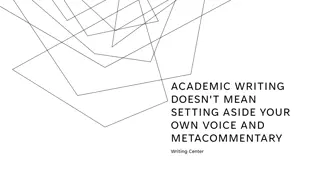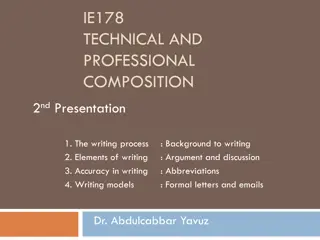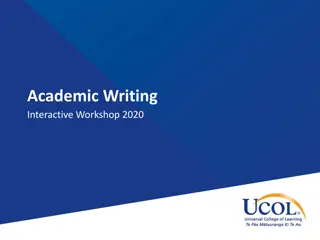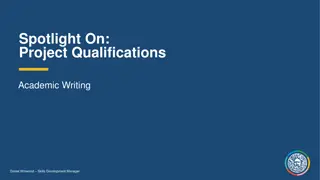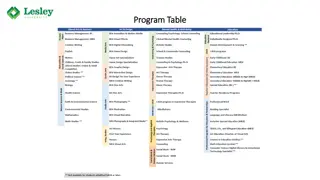Understanding the Purpose of Academic Writing Introductions
The introduction section of academic writing serves multiple purposes, including identifying the research problem, presenting existing solutions, highlighting the research gap, justifying the study, and outlining research aims. It aims to set the stage for the research and provide a clear direction for the reader. The content emphasizes the importance of a concise and focused introduction that logically leads to the research objectives without unnecessary details.
Download Presentation

Please find below an Image/Link to download the presentation.
The content on the website is provided AS IS for your information and personal use only. It may not be sold, licensed, or shared on other websites without obtaining consent from the author. Download presentation by click this link. If you encounter any issues during the download, it is possible that the publisher has removed the file from their server.
E N D
Presentation Transcript
ANRCB Training Module 9 Academic Writing Session 4: Writing the Introduction Section Nilupa S. Gunaratna, MS, PhD Purdue University November 7, 2023 Applied Nutrition Research Capacity Building (ANRCB) project of the Lao American Nutrition Initiative (LANI) This work is made possible through support from USAID as a supplement to a USAID Cooperative Agreement #7200AA18CA00009 (LASER-PULSE) to Purdue University. Contents reflect the views of the author and do not necessarily reflect those of USAID.
What is the Purpose of the Introduction? ANRCB | 2
What is the Purpose of the Introduction? 1. Identify the larger problem that your research is trying to solve (e.g., child undernutrition, household food insecurity) 2. Describe what has already been done to solve this problem 3. Identify the research gap 4. Provide the rationale for your research 5. State your research aims This can serve as the outline for your introduction ANRCB | 3
The Journal of Nutrition. 2015;145(7):1576-81. https://doi.org/10.3945/jn.114.208009 ANRCB | 4
Some Notes The larger problem 1. Introductions are typically short and focused 2. You are marking an argument for your research 3. The logic of your argument is key 4. All your text should lead completely and inevitability to your research aims 5. Avoid extra facts and details Your aims in your population ANRCB | 10
Hinnouho et al. 2022 In the present study, we assessed the impact of an MNP (containing 0.5 mg of thiamine, 0.5 mg of riboflavin, 150 g of folic acid, and 0.9 g of vitamin B12 along with 11 other micronutrients) on thiamine, riboflavin, folate, and B12 status of young children participating in a randomized controlled trial in Lao PDR. European Journal of Nutrition (2022) 61:3423 3435 https://doi.org/10.1007/s00394-022-02890-3 ANRCB | 11
Hinnouho et al. 2022 1. Micronutrient deficiencies have bad health effects 2. B vitamin deficiencies are increasingly a concern and these vitamins are important for health 3. Deficiencies of B vitamins have bad consequences and are caused by several things, especially in Laos 4. Micronutrient powders may be a solution 5. But results, especially with B vitamins and with children, have been inconclusive 6. Therefore, we did the following ANRCB | 12
Communicate the chain of logic Food procurement (what people buy, from whom, and how often) Diets and nutrient adequacy Food insecurity Consider a paper trying to answer two questions about households living with HIV in peri-urban Africa: 1. 2. How does food insecurity relate to households patterns of procuring food? How do these patterns of food procurement relate to people s diets and nutrient adequacy? The introduction should make sure this chain of logic is clear. ANRCB | 13
Takeaway messages 1. Writing is thinking 2. In your introduction, make an argument for your research with clear logic that completely motivates your aims 3. Include nothing else ANRCB | 14



